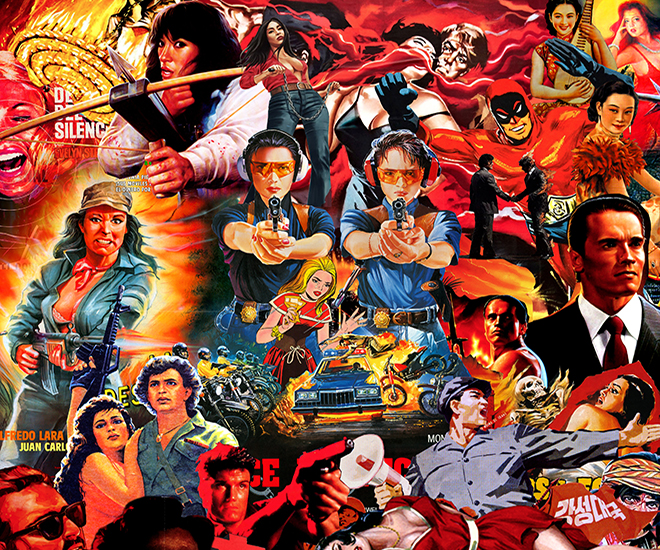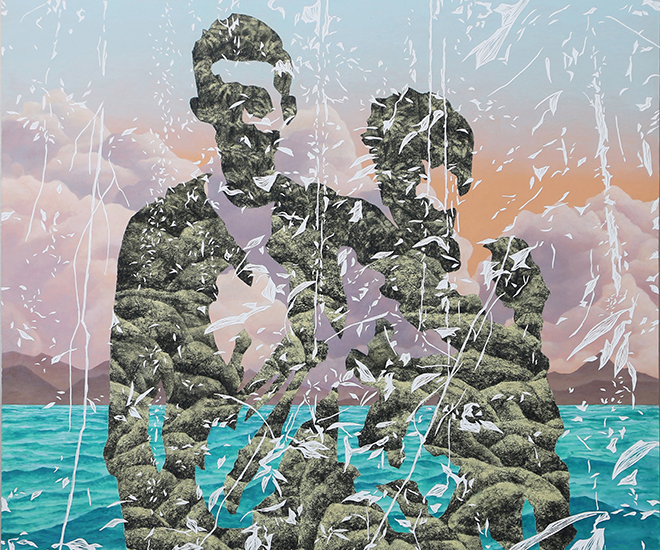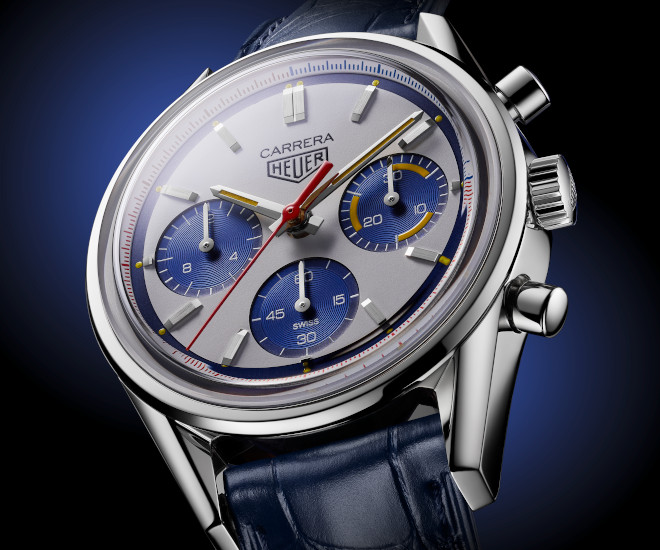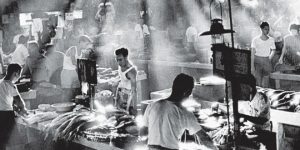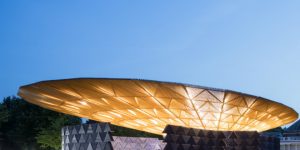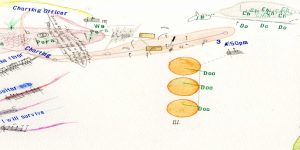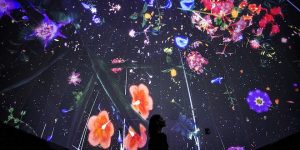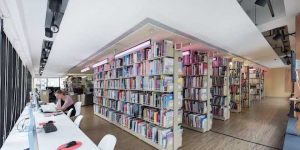Groundbreaking: Interview with Aaron Seeto of Museum MACAN, Indonesia
An interview with Aaron Seeto, Director of Museum MACAN, ahead of its highly anticipated opening in November

Preliminary rendering of the exterior of Museum MACAN, by MET Studio Design Ltd.
The Indonesian art scene is abuzz with anticipation for the grand opening of the Museum of Modern and Contemporary Art in Nusantara, or Museum MACAN, set to open to the public on 4 November. Founded by Indonesian philanthropist and leading collector Haryanto Adikoesoemo, it is the result of a decade-long dream – and endeavour – to build a permanent arts space in the city featuring a top-notch collection. Keeping it in the family, the Museum Foundation, which runs the Museum, is chaired by daughter Fenessa Adikoesoemo.
Given its geographical location, the museum’s programme will be focused on Indonesia and Southeast Asia, championing Indonesian artists first and foremost. The first show, ‘Art Turns. World Turns. Exploring the Collection of Museum MACAN’, realised by guest co-curators Charles Escher and Agung Hujatnika, will feature 90 artworks from the museum’s growing collection of over 800 modern and contemporary artworks, exploring Indonesian art history in relation to world art history, by presenting the works of Indonesian masters such as Sudjana Kerton and Trubus Soedarsono alongside international artists such as Mark Rothko and Gerhard Richter.

Sudjana Kerton, ‘Akibat Pemboman di Lengkong Besar Bandung, 1945’, 1979. Image courtesy Museum MACAN.
Museum MACAN is housed in a purpose-built space measuring 4000 square metres in the Kebon Jeruk neighbourhood of West Jakarta as part of the Gallery West complex, a multipurpose landmark building. Half of the museum’s space will be used for exhibitions, including two reinforced areas made specially to house large-scale commissions and an indoor sculpture garden. Given its emphasis on education, there is a designated education zone to engage with a wide range of audiences, from art practitioners to the general public.
Ahead of the museum’s official opening, Art Republik speaks with Aaron Seeto, Director, Museum MACAN, to find out more about his work, upcoming projects, the Indonesian art scene in general and the rise of private museums.
How did you come to take on this role at Museum MACAN?
Throughout my career, I have been dedicated to presenting and advancing artists from the Asian and Pacific regions, and have been in and out of Indonesia over many years developing curatorial research and working with artists. Indonesia, and South East Asia, have such vibrant and important art scenes, that the opportunity to develop and be a part of a new museum in a country where there is no precedent for the type of institution that we are building is tremendously exciting.
I was also attracted to the vision of the Museum, which has a focus on arts education. I believe in the important role that art and art education plays in opening up our minds to all kinds of curiosities and knowledge. Art is transformative, therefore the opportunity to work in Indonesia under these circumstances was incredibly hard to pass up!
What are the projects in the works for the grand opening? And what are the highlights we will see in the two spaces for large-scale commissions and in the 500-square-meter indoor sculpture garden?
The focus of the grand opening is ‘Art Turns. World Turns.’ This will take up all of our gallery spaces. There will be a number of new works included in the exhibition and which have been commissioned especially for the museum
Alongside this exhibition will be a selection of sculpture and installations in an area which we have called the ‘Sculpture Garden’. These are not commissions, but large-scale works from the collection that will include Yayoi Kusama’s ‘Infinity Mirrored Room – Brilliance of the Souls’ (2014), which is a significant work in the artist’s oeuvre.
We are also currently working on a commission for children, which will be announced shortly.

Yayoi Kusama, ‘Infinity Mirrored Room – Brilliance of the Souls’, 2014. Image courtesy Ota Fine Arts, Tokyo/ Singapore.
Have there been any support from the government at all, whether financial or otherwise, in the creation, running, and planning of the museum?
Museum MACAN is a private museum open to and for the public. In the future, we do hope that both the public and private sectors will work together to support the work of artists to the benefit of the community and society as a whole.
Aside from the permanent exhibition, will there be any special exhibitions of note in the first year? Are there any significant collaborations in the works, whether with other art institutions, galleries, other collectors, particular curators, artists etc.?
At this stage the Museum isn’t planning permanent exhibitions of its collection. Rather, our future programme will incorporate exhibitions curated by the curatorial team, collaborations with other museums that may be drawn from the collection, or developed directly with local and international artists. The museum is committed to supporting Indonesian artists, and in the Museum we will be able to present exhibitions in a much more expanded way than what has been done in Jakarta before. It will hopefully be a powerful bridge between artists’ studios and the public, and we look forward to sharing our future program soon.
The building is designed by MET Studio to create a “free-flowing museum experience”. How important is the museum’s architecture to its identity?
The architecture is bold and some may say daring, with sweeping curves integrated into the familiar white box that you expect from a museum. As a whole, the building really responds to the needs of the museum: generous spaces with the capacity to create moments of intimacy and to present great works of art and exciting exhibitions; public zones which encourage social interaction; education spaces which enable audiences regardless of age to learn and engage with art.
I think Met Studio Design, who is the architect of the museum, has been able to encapsulate much of the energy that we project on to the building, and the important role that we hope the museum will play within the city.
Do you think there’s a good ecosystem in place for art in Indonesia, or is there too heavy a reliance (if that could be anything other than a good thing) on a few art collectors’ efforts? What’s next, do you think, for the art community in Indonesia as a whole?
Indonesia has a great infrastructure of artists and a vibrant collecting scene that includes curators, critics, writers and of course collectors, and most importantly, a grass-roots and independent network. Together, these elements have been instrumental in developing much of the international art dialogue between Indonesia and the world and an extremely exciting environment in which the museum can work towards. What Indonesia lacks is museum infrastructure is where Museum MACAN can step in and connect the dots.

Sindudarsono Sudjojono, ‘Ngaso’, 1964. Image courtesy Museum MACAN.
And how does Museum MACAN plan to contribute?
As to the immediate future as to how Museum MACAN will contribute – the first of course is through a purpose built facility that allows for the preservation and presentation of important works of art, and the second is through arts education. These two vital elements add to a more holistic environment for the arts in Indonesia, and will allow the sector to support artists in more fulsome ways. How do we encourage an artist’s conceptual development from when they are young to when they are established? How can the Museum assist in expanding an artist’s peer network through connections with artists around the globe? This has to be more than simply through the process of collecting, but must also be supported by encouraging opportunities for critical dialogue and feedback which occurs through contemplating and discussing art in museums and gallery spaces.
Could you speak more about MACAN’s goals?
Museum MACAN’s mission is not just to present exhibitions of artworks, but to create a public space where discussions about art and culture can happen. We must create opportunities where things can be seen and experienced by a wide audience demographic, where ideas can be tested, and where dialogue between an artist and a diverse Indonesian audience can occur. With this, we hope to generate curiosity about art and to involve our audiences in the conversations that we find meaningful and important. However, this is not only the responsibility of a museum, but also more generally of a society which supports and values the arts as integral to its fabric.
There has been a rise in private museums in Asia, including Museum MACAN. For example, MAIIAM in Chiang Mai, is set up by Eric Bunnag Booth based on the family’s art collection, and opened last year. Why do you think that is?
Museum MACAN has been developed through a private initiative, here in Indonesia, similar to other places, the private sector is driving an important conversation about public access to art. I think that what Museum MACAN, MAIIAM and other initiatives around the region point to, is a desire to share knowledge, to present not only collections of art, but to encourage greater appreciation of art within the public sphere. Museum MACAN considers that by helping to develop the museum infrastructure in Indonesia it is doing so to benefit our culture and society more generally and that these activities are taking place for, and within the community.
How do you plan to engage with everyone from specialists in the art world to the general public, down to young students? How will you make it relevant and interesting for everyone?
The Museum is dedicated to providing access to people from all kinds of diverse backgrounds. Throughout my career, I have been committed to developing projects which bring many different types of audiences together. Engaging with art should not be exclusive to one kind of person over another. How we articulate complex ideas in ways which are easily understood, and how our programming might be responsive to the social context of Jakarta itself are really exciting questions to ask and which will be explored by our education and public programs teams as they go about devising activities.
The Museum is a space for contemplation, engagement and debate, and whether you are a seasoned art lover, or a student encountering the museum for the first time, we want our programs to spark curiosity and provide many different entry points into the wonderful world of artists.

Robert Rauschenberg, ‘Rush 20 (Cloister)’, 1980
Could you talk about the team that is behind MACAN? How are you going to work together to put MACAN on the map, so to speak? What are the challenges you envision having to overcome to do this?
The Museum is filled with extraordinary teams of people who are curious about art, and dedicated and excited to deliver a museum for Jakarta. It really is a team effort. People are working on exhibitions and education programs and the collection, through to communications, design, finance and IT – we all rely on each other to do one part of the puzzle. The Museum MACAN team is motivated by the desire to deliver on something which is not only important for the artworld, but fundamental to the broader advancement of culture in Jakarta and Indonesia.
More information at facebook.com/MuseumMACAN/.
